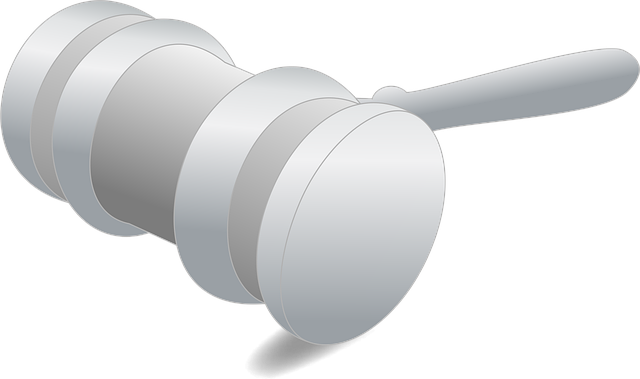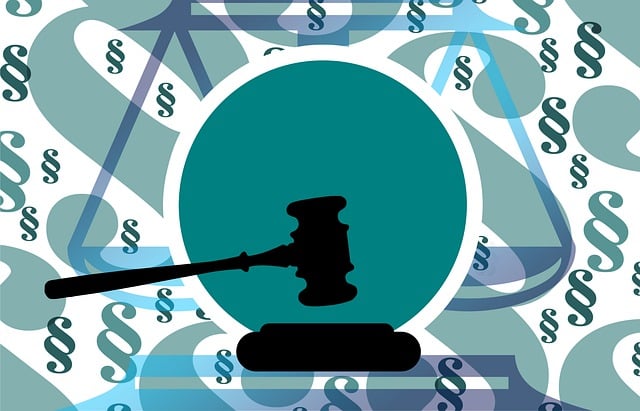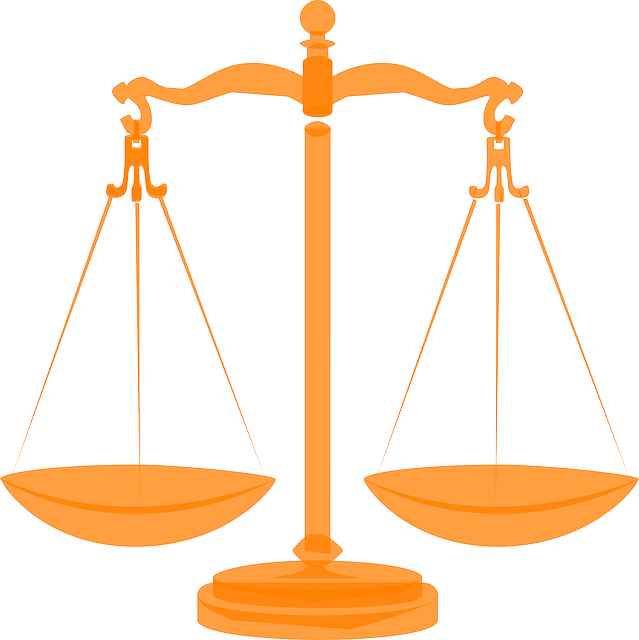Navigating a Wrongful Death Claim: Essential Legal Definitions for Claimants

A wrongful death claim, initiated by family after a tragic loss due to negligence or misconduct, see…….
In a world where loss and tragedy can strike without warning, the concept of a wrongful death claim emerges as a crucial mechanism for seeking justice and financial redress. A wrongful death claim is a legal process through which individuals or entities can hold accountable those responsible for causing the untimely and unjust death of another person. This comprehensive article delves into the intricate details of wrongful death claims, exploring their definition, global impact, economic implications, technological enhancements, regulatory frameworks, challenges, case studies, and future prospects. By the end, readers will gain a profound understanding of this complex yet vital aspect of legal systems worldwide.
Definition:
A wrongful death claim is a legal action initiated by the surviving family members or dependents of a deceased individual against the person or entity deemed responsible for their untimely death. It asserts that the defendant’s negligent, reckless, or intentional actions led to the victim’s demise, resulting in significant emotional distress and financial loss for the survivors.
Core Components:
Negligence or Wrongful Act: The claim hinges on proving that the defendant breached a duty of care, acted negligently, recklessly, or intentionally, directly causing the death of the plaintiff’s loved one.
Causation: It must be established that the defendant’s actions were the direct and proximate cause of the victim’s death. This requires a thorough investigation to determine the sequence of events leading to the tragedy.
Surviving Dependents: Wrongful death claims are typically brought forth by close relatives or dependents who suffered financial loss due to the deceased’s death, including loss of support, companionship, and other intangible damages.
Historical Context:
The concept of wrongful death liability has evolved over centuries, with roots tracing back to English common law. Initially, survival statutes were limited in scope, primarily focusing on survival of actions for personal injuries. However, as societal values shifted towards recognizing the value of human life, legislatures began expanding survival statutes to include wrongful death claims. This evolution reflects a broader societal recognition that survivors deserve compensation and justice when facing loss through no fault of their own.
Significance:
Wrongful death claims play a pivotal role in several ways:
The global landscape of wrongful death claims exhibits both uniformity and diversity, shaped by cultural, legal, and economic factors.
Uniformity:
Diversity:
Key Global Trends:
The economic dimensions of wrongful death claims are multifaceted, impacting both the plaintiffs and defendants.
Market Dynamics:
Investment Patterns:
Economic Impact on Systems:
Technology has revolutionized the landscape of wrongful death claims, offering both opportunities and challenges.
Impactful Technologies:
Digital Forensics: Advanced digital forensics techniques enable thorough investigations, uncovering critical evidence and determining liability in complex cases.
Data Analysis: Big data analytics helps identify patterns and trends in wrongful death incidents, enabling proactive safety measures and better risk assessment.
Online Platforms: The rise of e-commerce and online interactions has led to new types of wrongful death claims, such as those involving data breaches, privacy violations, and online negligence.
Future Potential:
The regulatory framework surrounding wrongful death claims varies globally but generally reflects a balance between compensating victims and protecting defendants’ rights.
Key Policies and Regulations:
Survival Statutes: These legal provisions define the conditions under which a cause of action for wrongful death survives the deceased’s death, specifying time limits and eligible parties to bring the claim.
Liability Laws: They establish the rules of liability, determining who can be held responsible for causing wrongful death, whether individuals, businesses, or governmental entities.
Compensation Schemes: Some jurisdictions offer no-fault compensation plans, ensuring victims receive support regardless of fault, while others rely on tort law to determine compensation.
Influential Legislatures:
Despite its importance, the wrongful death claim process faces several challenges and criticisms that warrant attention.
Main Challenges:
Complex Liability Issues: Determining liability in wrongful death cases can be intricate, especially when multiple parties or factors contribute to the incident, making it difficult to apportion fault.
Statutes of Limitations: Strict time limits on bringing claims can pose barriers for plaintiffs, particularly in complex cases where discovery and investigation take considerable time.
High Costs and Lengthy Duration: Wrongful death litigation is often lengthy and expensive due to the detailed investigations required and the high stakes involved, making it inaccessible for some plaintiffs.
Criticisms and Solutions:
Overemphasis on Punitive Damages: Critics argue that some legal systems place too much emphasis on punitive damages, which aim to punish wrongdoers, potentially leading to excessive awards and unfair consequences for defendants. Striking a balance between punishment and compensation is essential.
Inadequate Compensation for Non-Monetary Losses: While monetary compensation can provide relief for economic losses, it may not fully address the profound emotional distress experienced by grieving families, prompting calls for more holistic approaches to damage awards.
Lack of Uniformity Across Jurisdictions: Inconsistencies in laws and procedures across jurisdictions can create challenges for plaintiffs seeking redress in different countries, highlighting the need for international cooperation and harmonization.
Case Study 1: Medical Negligence in the US
In a prominent US case, Smith v. Hospital Corporation, a patient (Mr. Smith) suffered a severe brain injury due to medical negligence during a routine surgery. The court ruled in favor of Mr. Smith’s family, awarding substantial damages after finding that the hospital and its staff breached their duty of care. This case set a precedent for holding healthcare providers accountable for negligence, demonstrating the power of wrongful death claims in promoting safety and ensuring compensation.
Case Study 2: Product Liability in Europe
A European product liability claim, Johnson v. Toy Manufacturer, involved a child who sustained severe injuries after playing with a defective toy. The court awarded significant damages to the child’s family, forcing the toy manufacturer to recall similar products and improve quality control measures. This case illustrates how wrongful death claims can drive safety improvements and hold manufacturers accountable for their products’ safety.
Case Study 3: International Maritime Wrongful Death
In a complex international case, Maria v. Shipping Company, a crew member died in a maritime accident while working on an oil rig. The victim’s family, based in a different country, initiated a wrongful death claim against the shipping company under both domestic and international law. This case highlighted the challenges and opportunities of cross-border claims, ultimately leading to a landmark settlement that set new standards for maritime wrongful death compensation.
The future of wrongful death claims is shaped by technological advancements, shifting societal values, and evolving legal landscapes.
Potential Growth Areas:
Emerging Technologies: As AI, blockchain, and VR technologies mature, their integration into wrongful death cases will likely increase, enhancing efficiency, accuracy, and transparency.
Global Harmonization: Efforts to harmonize laws and procedures across jurisdictions may gain momentum, facilitated by international organizations and increasing globalization, to provide consistency for plaintiffs seeking redress worldwide.
Emerging Trends:
Mental Health Claims: With growing recognition of mental health issues, there is a rising trend in wrongful death claims related to emotional distress, including cases involving suicide or psychiatric conditions exacerbated by negligence.
Climate Change and Environmental Hazards: As climate change intensifies, we can expect an increase in wrongful death claims linked to extreme weather events, environmental disasters, and public health crises, placing greater emphasis on corporate responsibility and government accountability.
Strategic Considerations:
Wrongful death claims stand as a testament to humanity’s ongoing quest for justice, fairness, and compensation in the face of tragic loss. This comprehensive exploration has revealed the intricate web of legal, economic, and technological considerations that shape this critical aspect of our legal systems. From historical roots to global trends, technological advancements, regulatory frameworks, and future prospects, wrongful death claims continue to evolve, reflecting society’s changing values and priorities.
As we look ahead, the ongoing dialogue between legal professionals, policymakers, and technology experts will be crucial in shaping the future of wrongful death claims, ensuring they remain a powerful mechanism for holding accountable those responsible for causing the untimely deaths of innocent individuals while providing much-needed support to grieving families.
Q: What is the time limit for filing a wrongful death claim?
A: The statute of limitations varies by jurisdiction and type of case. In many countries, it ranges from one to three years from the date of death. It’s crucial to consult local laws or seek legal advice promptly.
Q: Can I sue for emotional distress caused by someone’s death?
A: Yes, in many jurisdictions, you can bring a claim for wrongful death if you suffered significant emotional distress due to the loss of a loved one, provided you meet specific criteria and can prove your damages.
Q: How does product liability differ from medical malpractice?
A: Product liability involves holding manufacturers or distributors accountable for selling defective products that cause harm, while medical malpractice focuses on negligence or misconduct by healthcare professionals during treatment or care. Both share similar goals of ensuring safety and compensating victims but have distinct legal frameworks.
Q: Can international wrongful death claims be pursued?
A: Yes, cross-border wrongful death claims are possible through a combination of domestic laws and international treaties, such as the Rome I Regulation in the EU. Legal professionals specializing in this field can guide plaintiffs through the complexities.
Q: What role does technology play in modern wrongful death cases?
A: Technology enhances investigations, facilitates data analysis for trend identification, and offers tools like digital forensics, online evidence gathering, and advanced litigation support, revolutionizing how these cases are handled.

A wrongful death claim, initiated by family after a tragic loss due to negligence or misconduct, see…….

Navigating a wrongful death claim is an emotionally challenging yet crucial process for families cop…….

After a fatal car crash, individuals can seek compensation through wrongful death claims, which allo…….

Wrongful death claims require specialized legal expertise to navigate complex factors like liability…….

A wrongful death claim holds accountable parties for negligent or intentional actions leading to a p…….

A wrongful death claim not only seeks financial compensation but also aims to address emotional dama…….

A wrongful death claim involves legal action taken by beneficiaries when someone dies prematurely du…….

After filing a wrongful death claim, the initial phase involves gathering crucial information like m…….

A wrongful death claim is a legal process allowing families to seek justice and financial relief aft…….

A wrongful death claim provides compensation for families affected by the sudden loss of a loved one…….